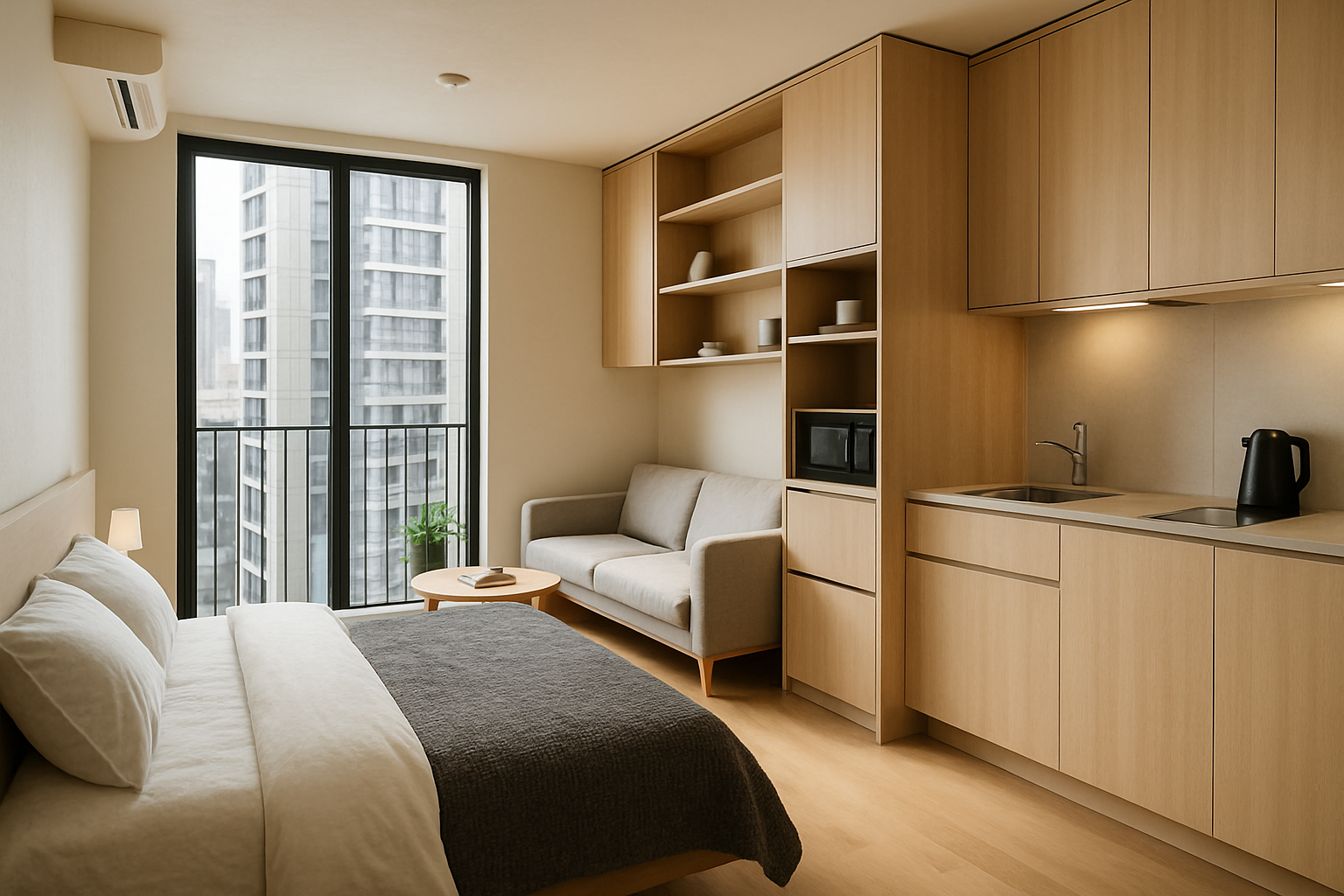A Guide to Budget Friendly Apartments
Budget-friendly apartments may offer practical living solutions for renters seeking value without sacrificing comfort. Understanding lease terms, location factors, and maintenance responsibilities helps tenants make informed decisions when searching for housing within their budget range.

Securing a comfortable place to live without overspending requires careful planning and awareness of what the rental market offers. Many renters face challenges balancing cost with quality, location, and essential features. Understanding the different apartment types, pricing structures, and amenities available can significantly improve your search experience and help you find a home that aligns with your financial goals.
Apartments for Rent and Affordable Options Overview
The rental market includes a wide spectrum of pricing tiers, from budget-conscious units to premium properties. Affordable housing typically refers to rentals where monthly costs do not exceed 30 percent of a household’s gross income. Many cities offer income-restricted apartments through government programs or private developers committed to providing accessible housing. Additionally, older buildings, properties farther from urban centers, and units in developing neighborhoods often present lower-cost alternatives. Researching local market trends and comparing listings across multiple platforms can reveal hidden opportunities. Working with rental agencies or utilizing online tools that filter by price range streamlines the process. Keep in mind that affordability does not necessarily mean sacrificing quality—many budget-friendly apartments include updated appliances, adequate square footage, and access to community resources.
Luxury Apartments for Rent and Furnished Apartment Choices
For those seeking elevated living experiences, luxury rentals provide premium finishes, modern design, and exclusive amenities such as rooftop lounges, fitness centers, concierge services, and smart home technology. These properties often command higher rents but deliver convenience and comfort that appeal to professionals, executives, and individuals prioritizing lifestyle enhancements. Furnished apartments represent another segment of the market, offering move-in-ready spaces equipped with furniture, kitchenware, and sometimes utilities included in the rent. These options suit short-term renters, corporate relocations, or individuals transitioning between homes. While furnished units typically cost more per month than unfurnished counterparts, they eliminate upfront expenses for furniture and reduce logistical hassles. Evaluating whether the added cost aligns with your timeline and needs is essential before committing.
Studio and 1 Bedroom Apartments for Rent Explained
Studio apartments combine living, sleeping, and kitchen areas into a single open space, making them ideal for individuals or couples seeking simplicity and lower costs. These units maximize efficiency and often feature clever storage solutions and multifunctional furniture. Studios generally cost less than one-bedroom apartments, making them attractive for young professionals, students, or anyone prioritizing location over space. One-bedroom apartments provide separate sleeping quarters, offering more privacy and defined living areas. This layout suits those who work from home, entertain guests, or prefer distinct spaces for different activities. Pricing for one-bedroom units varies widely based on location, building age, and amenities. Urban centers typically command higher rents, while suburban or rural areas offer more affordable options. Understanding your space requirements and lifestyle habits helps determine which layout best serves your needs without unnecessary expense.
Pet Friendly Apartments for Rent and Key Amenities
Pet owners face unique challenges when searching for rentals, as many properties impose restrictions on animals. Pet-friendly apartments accommodate tenants with dogs, cats, or other pets, though additional deposits, monthly pet fees, or breed restrictions may apply. Identifying these properties early in your search saves time and prevents disappointment. Beyond pet policies, evaluating amenities is crucial for maximizing value. Common features include on-site laundry, parking, security systems, outdoor spaces, and proximity to public transportation. Some buildings offer additional perks like swimming pools, community rooms, or package lockers. Prioritizing must-have amenities versus nice-to-have features helps narrow your options and ensures you invest in aspects that genuinely enhance your daily life. Always review lease terms carefully to understand what is included in your rent and what incurs extra charges.
| Apartment Type | Typical Monthly Cost Estimation | Key Features |
|---|---|---|
| Studio Apartment | $800 - $1,500 | Open layout, efficient use of space, lower utility costs |
| 1 Bedroom Apartment | $1,000 - $2,200 | Separate bedroom, more privacy, suitable for remote work |
| Furnished Apartment | $1,200 - $2,800 | Move-in ready, includes furniture and essentials, flexible leases |
| Luxury Apartment | $2,000 - $5,000+ | Premium finishes, exclusive amenities, prime locations |
| Pet-Friendly Apartment | $900 - $2,000 (plus pet fees) | Allows pets, may include pet amenities like dog parks |
Prices, rates, or cost estimates mentioned in this article are based on the latest available information but may change over time. Independent research is advised before making financial decisions.
Strategies for Finding Budget-Friendly Rentals
Successfully locating an affordable apartment requires proactive effort and strategic thinking. Start your search well in advance to avoid rushed decisions that lead to overspending. Utilize multiple listing platforms, set up alerts for new postings, and consider working with local rental agents who understand market dynamics. Flexibility with move-in dates, neighborhood preferences, and lease terms can unlock better deals. Some landlords offer incentives like reduced deposits, free parking, or waived application fees to attract tenants. Networking within community groups or social media platforms may reveal unlisted opportunities. Additionally, touring properties in person allows you to assess condition, neighborhood safety, and proximity to essential services. Always read lease agreements thoroughly, clarify maintenance responsibilities, and confirm all costs upfront to avoid surprises.
Understanding Lease Terms and Hidden Costs
Beyond monthly rent, renters must account for various expenses that impact overall affordability. Security deposits, application fees, renters insurance, utilities, and parking fees add to upfront and ongoing costs. Some landlords require first and last month’s rent at signing, which can strain budgets. Understanding what utilities are included—such as water, trash, or internet—helps you calculate true monthly expenses. Lease terms also dictate renewal policies, rent increase caps, and early termination penalties. Clarifying these details before signing protects you from unexpected financial burdens. If a lease seems unclear or unfavorable, don’t hesitate to negotiate or seek legal advice. Being informed and prepared ensures you enter a rental agreement confidently and sustainably.
Conclusion
Finding a budget-friendly apartment involves balancing cost, location, amenities, and personal needs. By understanding the variety of rental options available—from studios and one-bedroom units to luxury and furnished apartments—you can make informed choices that align with your financial situation and lifestyle preferences. Researching local markets, evaluating key features, and carefully reviewing lease terms are essential steps in securing a home that meets your expectations without compromising your budget. With diligent effort and strategic planning, affordable and comfortable housing is within reach.




